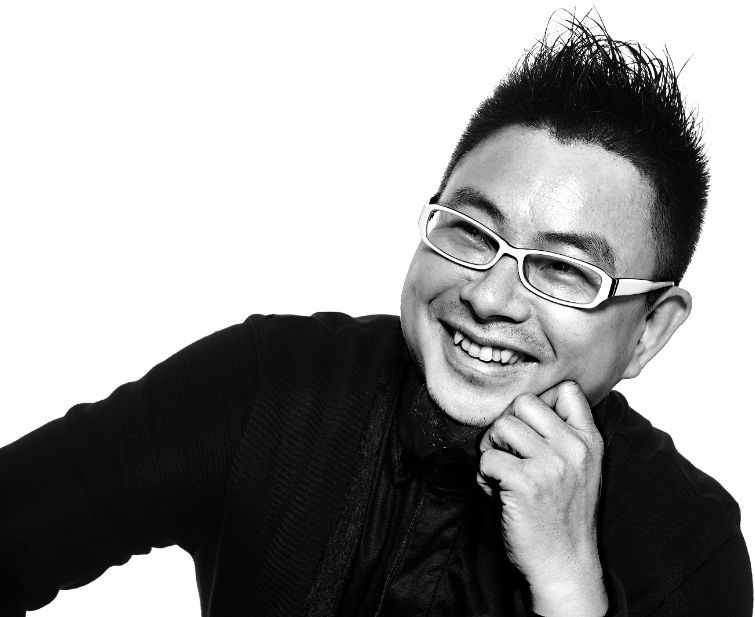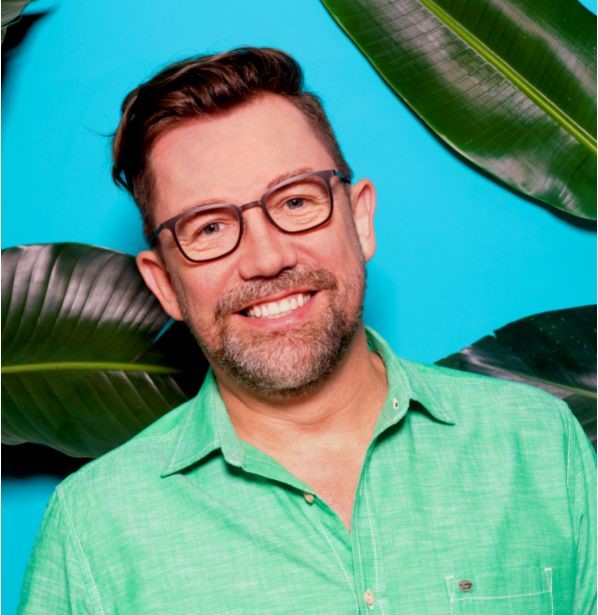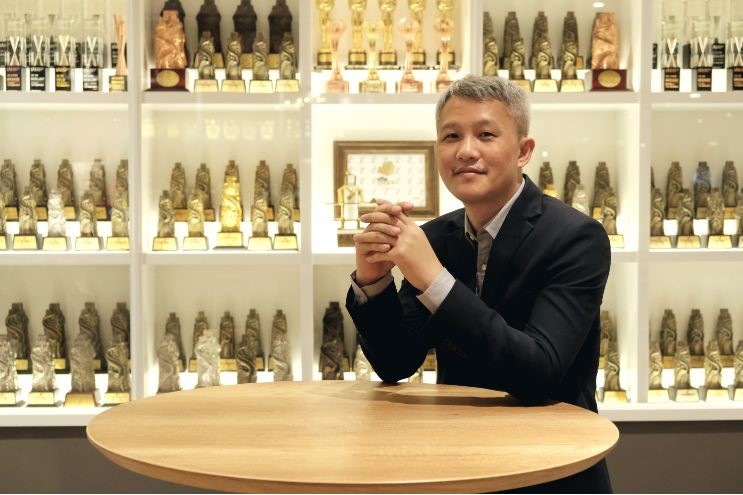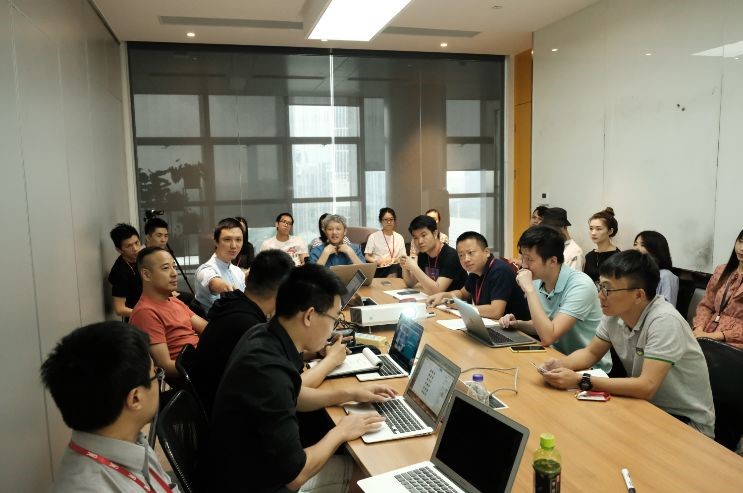“Ensuring everyone thinks digital ‘end to end’ and values the importance of data-informed strategy is our primary aim and we have high hopes for the payback of this approach.” – Mark Bowling, PHD China Chief Strategy Officer
Below is the English translation of the article. To read the original article in Chinese, click here.
Being the actual creators of innovation behind the rapid transformation in the advertising industry in recent years, the advertising companies themselves have not attracted as much attention as they deserve. However, the 10 advertising companies interviewed by Modern Advertising are demonstrating their respective capabilities based on their structural changes and breakthroughs to aggressively seize the “centre stage”.
Evolving the role of “integrator”
Of all the recent changes experienced by advertising companies, “integration” is a topic that cannot be overlooked. Whether it be the integration of business modules, integration of advertising resources, or integration of HR structures, “integration” is now considered the optimal combination of strength and capabilities.
“Hive” style integrated services
“From the perspective of existing market changes and customer needs, advertising companies or business teams need to be more deeply integrated. What customers need are one-stop solutions, rather than transitional services or integration of resources. There may not be an absolute ‘Leading Agency’ in the future, but we can combine the teams like a hive on a project basis. Therefore, every advertising company may become a Leading Agency, and it depends on the goals of projects as well as the strategic capabilities and execution of the advertising companies or business modules. The structure of future agent teams needs to be more flexible, and talent needs to be diversified. While expanding into new fields and extending businesses, they should not lose their core competitive advantages,” said Zhang Ning.
It is not so difficult to understand the “hive” style combination proposed by Zhang Ning. It requires advertising companies to be capable of providing one-stop solutions independently while also realizing smart internal and external combinations based on the different needs of customers. Such flexibility is a prominent feature of popular creative firms.
“As for advertising 5 years ago, a brand only needed to make 1-2 waves of 360° integrated communication throughout the year. At that time, an advertising campaign was like an integrated military operation. Taking Ogilvy as an example, there were Ogilvy & Mather, Ogilvy Public Relations, Ogilvy Action and Ogilvy Interaction, who were collaborating with each other like a large-scale joint navy, army and air force operation. However, the process was complex and slow, and it was difficult to coordinate with each entity. However, the present communication environment is increasingly fragmented. A brand needs to make 8-10 waves of advertising campaigns throughout the year, and one campaign needs 1-2 months from the brief to completion, so a military style group operation process is too complex, slow and inefficient, which may lead to missed opportunities while organizing the campaign. Advertising campaigns today are more like special forces operations, in which a small team needs to get everything done. The gunner needs to fly a plane, and the computer specialist also needs to detonate a bomb,” said Deng Bin, the CEO of Tian Yu Kong.
 Deng Bin, the CEO of Tian Yu Kong
Deng Bin, the CEO of Tian Yu Kong
In Tian Yu Kong, every independent team, regardless of being Digital or Social, contains employees specializing in art, creativity, copywriting, planning and customer service, all of whom need to understand both the brand and traditional advertising, be familiar with both Digital and Social, make both traditional TVC videos and experience marketing, and achieve various branding tasks quickly and efficiently.
During the 10th anniversary of Tmall’s “Double Eleven” Festival in 2018, Tsingtao Beer and Tmall jointly customized a kind of limited-edition product – Night Owl Beer. The “small, efficient and fast” team of Tian Yu Kong created a fantastic Music Video – “The Song of the Night Owl” – for the product, in which a few friends boarded a “Night Owl Bus” on a specific night to honor an engagement agreed upon 10 years ago.
In order to create this fantastic “Night Owl” video, Director Xiao Tian invited by Tian Yu Kong worked with a senior carpenter for dozens of nights to build a six-meter-long “Night Owl Bus” that seemed to have come from a fantasy movie, to make the audience feel that they were in a fairy tale world. Tian Yu Kong also invited artists Gu Xiqi and Pei Yang to write and sing their own song while enjoying the engagement which finally came into being after 10 years. The imaginary fantastical bus successfully made Tian Yu Kong a hot topic. They even brought the bus out of the video and drove it to Shanghai to meet their audience.
Tian Yu Kong also tried to change millions of subway billboards to newsstands. The 2002 World Cup, the only one that the Chinese Men’s Soccer Team has ever qualified for, was a celebration for all Chinese people. 16 years later, Tencent Sports decided to reunite those players. After accepting the mission, Tian Yu Kong set up a memory outpost at the Hongkou Subway Station in Shanghai, a billboard made up of numerous “Titan Sports” newspaper articles published in 2002 which brought back proud memories, and the nostalgic news of Chinese soccer in 2002 spread everywhere.
“The work we did on this project had a great effect on the street. With sufficient customer resources, Tencent even invited 2002 coach Bora Milutinovic, who in turn triggered the second transmission for the entire event. When we finished the case, the World Cup in Russia was about to start. Both Nike and Adidas contacted us to share the work, and we also discussed the possibility of future cooperation,” said Deng Bin.
From Tsingtao Beer to Tencent Sports to Nike and to Adidas, more and more high-end and international customers contacted Tian Yu Kong in 2018. “In terms of creative services, 60%-80% of the original advertising budget was spent on the 4A system, but now it has dropped to 30%-50%. In 2018, more than 10 Top 500 international brands such as Pepsi, Mondelēz, Unilever, L’Oreal, Nike, Adidas and Budweiser contacted us to discuss the possibility of cooperation. Our major customers in 2017 were internet brands, but numerous other international brands suddenly contacted us in 2018. In my opinion, this was the result of our accumulated creative ideas rather than an occasional phenomenon. We contributed most of our popular works in the market through the model of creative stores. After seeing this, brand owners will certainly reconsider their advertising methods, and thus change their minds to find new solutions,” said Deng Bin.
The reason for such phenomenon, in Tian Yu Kong’s opinion, is that the time, attention and media environment of users have become fragmented, which in turn causes the spreading process of brands to be “shredded”. Therefore, advertising agencies will be singled out when advertisers have needs. Although people used to consider that Party A would expect an omnipotent company to help them get everything done for its advertising, such requirements are difficult to meet today. The annual strategy can be consigned to a 4A company, but projects that are more socialized and digitized or e-commerce sales promotion activities must be undertaken by more flexible and creative companies.
 “The Song of Night Owl” – the fantasy MV created by Tian Yu Kong for Tsingtao Beer
“The Song of Night Owl” – the fantasy MV created by Tian Yu Kong for Tsingtao Beer
In the past two years, news outlets have covered many stories involving disruption among consulting companies, the transformation of 4A, the JWT merger and WPP layoffs. After hearing about these changes, some people think that advertising has died, and that traditional ads are no longer useful. In the face of these trends, Deng Bin said that, “Traditional advertisements that make people shut up or appear to be conservative have died, but creative advertisements that can be involved in interactions and UGC are always the most popular. It is now the worst era, but also the best era. In the past few years, the rise of so many creative companies such as Tian Yu Kong have indicated that creative people who have traditional advertising skills and dare to embrace changes are just so in vogue, that creativity is increasingly valued by Party A, and that there is a bigger and bigger space for creativity. This is the best time for creative people.”
Going with such changes, Ogilvy carried out a comprehensive reform in 2017, and introduced the “One Ogilvy” framework, which left Sun Weidong deeply impressed. “The needs of Party A on Party B have changed a lot because the rapid development of internet technology has disconnected so many companies from the market, and many customers are also facing work efficiency related problems, so I highly agree with the changes made by Ogilvy, even though the actual approaches might be different for specific companies,” said Sun Weidong.
Just as we mentioned earlier, SGAD+ and Thinkgrand under SGAD Group have also merged. “The reason why we integrated SGAD+ with Thinkgrand is to provide more in-depth services and establish much longer relationships with our customers. Of course, we will never give up project-based cooperation. We have two business units that are providing in-depth branding services and also a big department that is providing specific project services.”
At the same time, more and more SMEs have started to cooperate with SGAD+. In order to meet the needs of these potential customers, SGAD+ also began to set up an integrated service company for SMEs.
A little different from SGAD+, Dentsu Shanghai has confirmed its development towards “an integrated agency guided by data”. Tang Rui said that, instead of seeking cooperation on single projects with the customer through comparison of proposals, Dentsu Shanghai prefers to provide customers with fully integrated services. Therefore, Dentsu Shanghai can mobilize the entire mechanism and resources to establish a rigorous and stable team capable of providing systematic services for customers.
While assisting Nippon to make an open exploration, they integrated the creative team newly established in 2018 and focused on UGC, the Japanese team responsible for front-end product grooming and brand architecture as well as the team composed of members younger than 30 responsible for concerts and online shows.
In 2018, Isobar also implemented strategic integration and upgrading. Isobar Beijing launched a new mode of operation, and Huang Minwei hopes to turn Isobar into a leader and pioneer of consulting services integrated with the communications business.
“In the past, consultation and advertising used to be two parallel lines. In the two relatively independent business units, we used to interact with customers with different attitudes and in different ways. However, such kinds of ‘split’ service models might result in buck-passing. Due to the frequent contact between advertising companies and their customers, we could hardly change the identity or thinking to warn the customers, so we had to explore and understand the problems of customers themselves and provide our services from the perspective of customers rather than acting in a role with sufficient related industrial and branding experience,” said Huang Minwei.
Therefore, Isobar integrated the three companies acquired in the past three or four years in 2018, and truly connected the “spilt” sections of the businesses, i.e. marketing, creative and digital technology to establish the “front, middle and back” service system. The front-end proposes the solutions as a consultant, the middle enhances the daily services, and the back-end provides new technical tools and platforms to help customers connect the entire chain.
For Huang Minwei, Isobar China will neither be only an advertising company, nor just a project consulting company. It will integrate both to help customers gain better outcomes and achievements.
“The relationship between advertising agencies and customers has always been in a state of separation and integration. Now with the changes in the market and marketing environment, the customers do not have enough manpower and resources to manage so many agents and suppliers. So, many of those customers, especially the long-term ones, are gradually changing towards preferring the previously mentioned one-stop service model, with the expectation that we can manage different aspects of marketing activities. Maybe we are still short in some areas, but we can help customers manage and integrate their businesses, rather than relying on the marketing teams of customers to cover various fields, and chase novel ideas, new media platforms and new technologies,” said Huang Minwei.
 Mark Bowling, Chief Strategy Officer, PHD China
Mark Bowling, Chief Strategy Officer, PHD China
Mark Bowling also noticed this specific issue regarding Chinese clients – the need for their agencies to cover much broader areas unique to the market – from KOL management, to content collaboration, to e-commerce media management and the BATJ partnership.
“Finding a one-size fits all solution from one agency partner is currently unlikely, so it’s important for clients to effectively manage their rosters in the most efficient and operationally smooth way possible” Mark Bowling emphasized. “Agencies should therefore ensure that they are keeping their clients informed of their new and developing capabilities, especially those that their client may not currently be accessing. Nothing is worse than a client finding out that their agency can help them solve a problem from a third party!”
Ultimately, this is an era of returning to real businesses which poses a great challenge regarding larger scale and expertise for marketing companies committed to providing comprehensive services.
In Huang Qingyan’s opinion, a successful future-oriented advertising agency should not have only one specific skill, nor just focus on one method or model. It is the fundamental challenge that every advertising company has to overcome. They must be both flexible and adaptable, not limited to a single process or a specific model. They also have to possess an open and collaborative environment that encourages and truly enables employees and customers to learn new methods.
“We have to realize that it is very important to support customers to adopt the right ‘customer-centric’ marketing approach across all ATL and BTL platforms. There are four key elements. Firstly, become an integral component of the ‘going to market’ strategy for each customer. The response and briefing are no longer so important, and we need to be more proactive and forward-looking to find valuable marketing approaches for our customers. Secondly, ensure that our professional capabilities are deep enough to build/maintain competitive advantages. This must be broad enough to facilitate smooth business and cooperation. Thirdly, look for business opportunities that can be used to evaluate tangible results. Indicators such as CPM and CTR struggle to quantify the true value of our services. Fourthly, unify technology, data and creativity. When those three aspects are effectively combined, marketing will gain excellent human experience. The consumer interaction generated by it can reflect our deep understanding of the consumer journey,” said Huang Qingyan.
“This is why we needed to work on integration and upgrades in 2018, because the needs of customers are continuously driving us towards this direction. We hope to be more powerful in the field, and our teams should have some key capabilities instead of merely being an integrator,” Huang Minwei concluded.
Establish a “vigorous” talent system
Advertising agencies keep dismissing incompetent employees. This is because the talents who fill the roles are no longer traditional, straight-arrow advertising professionals, but rather new school marketing talents who have the capabilities of data analysis and interactive creativity. In addition, with the continuous adjustment of organizational structures, traditional talent systems are being modified with the goal of establishing “vigorous” talent systems.
The GIMC Academy is a key platform for GIMC to rebuild their “vigorous” talent system. It is no longer a college that emphasizes academic study or training in the traditional sense, but a professional department that stimulates knowledge creation and that breaks through the traditional boundaries of business. It has been an incubator to gather professional talents and achieve innovation of business models.
“From the perspective of quantity, GIMC never lacks talent. However, the key is how to release the professional capabilities of employees to provide better services for our customers. After a company is scaled up, a form of line production will appear in every position, but this is no longer suitable for the needs of modern enterprises. In today’s mobile internet era, responses to market needs are accelerated. If we still worked in a ‘pipelined’ way, what we could provide would just be standard, and there would seldom be ground-breaking creative works,” said Xiao Gefeng.
 Xiao Gefeng, the Vice President of GIMC Academy
Xiao Gefeng, the Vice President of GIMC Academy
For advertising agencies, what is most important is human creativity. Therefore, the GIMC Academy has built a stage for employees to apply their knowledge and motivate them to unleash their professional skills.
How is it achieved? When the group encounters short-term or newly created projects, the academy, which acts as a bridge between the internal and external worlds, will release the subjects internally after evaluating the projects in order to bring in the staff with relevant professional skills. If there are problems that cannot be solved internally, the academy will leverage external resources and aggregate both industrial and social professionals to find the best solutions together through its own studio platform.
Such adjustments inject fresh ideas into the original operating model without affecting the business execution of both parties. For the company, it differs from its previous talent recruitment solution as it revitalizes internal talent resources and reduces the risks incurred by the recruitment of business units.
“Currently, the effect is very good. During the past year, we finished more than 100 projects through such models. Aggregating talents to finish professional projects requires us to split the projects and control the quality in a precise manner, that is, resolving long-term projects into short-term closed-loop tasks, then ensuring the acceptance of each task, and giving reasonable rewards,” said Xiao Gefeng.
 Project Co-working at GIMC Academy
Project Co-working at GIMC Academy
Mindshare Beijing also optimized their existing team structure and reorganized the values of each employee in their position. What we are talking about is two-way value generation, not only value created by employees for the company, but also value provided by the company for its employees.
“The transformation of human resources is a key element in a successful reform. We have to make employees find the right positions, so that they can maximize each other’s value. I also encourage colleagues to maintain their momentum for the future. Therefore, they have to find suitable ‘wings’ for themselves, i.e. the additional skills besides their original professional capabilities, either content marketing, data insight, or strategy exploration. Advertising agencies need diversified and versatile talents who can adapt to the current situation. It is not to just add another skill, but to think about their current work from another perspective,” said Zhang Ning.
In 2018, GIMC recruited more than 100 fresh graduates, but the total number was lower compared to previous years. Why was there such a change? Xiao Gefeng said that what the group needed before were young employees majoring in advertising or marketing, but now they are also required to have the capabilities of data analysis or operations, which have posed higher requirements for the talents.
“In 2019 we will continue to focus our efforts on building a great talent approach to retain and attract the best people in the business. Ensuring everyone thinks digital “end to end” and values the importance of data-informed strategy is our primary aim and we have high hopes for the payback of this approach” said Mark Bowling.
While reshaping the talent system, Dentsu Shanghai completed the updating of new generations. The creative structure of Dentsu Shanghai under the leadership of CCO Kazuki Tsuburaku, Executive Creative Director Li Zheng and KC is not new, but the company’s average age at the Creative Director level and above has gone down. In terms of recruitment, Dentsu Shanghai gives priority to talents under the age of 30. At the same time, it also looks for special talents from different fields instead of sticking to the advertising industry.
“In the past two years, the advertising industry has basically lost its halo. Passionate, ambitious and talented young people are not as eager to join advertising agencies as they used to be, plus there has been a serious lack of talent reserves. You may find that even the customers have more young employees than advertising agencies. That’s really a headache,” said Tang Rui.
Yang Shanshan, the VP of Brand Management at P&G China, publicly remarked that 70% of the colleagues on her team were born after 1990.
In Tang Rui’s opinion, young employees can make four times the contributions of more experienced ones and they are the guarantee of a rapid operational mechanism. The examples of KFC and Nippon clearly indicate that young employees are always excited when they have discussions between themselves, but once a senior colleague joins them, they immediately become quiet. “In 2018, our team responsible for KFC’s ‘Chicken Wing Utopia’ project was basically composed of colleagues under the age of 30, and senior colleagues generally didn’t interfere with their work. When you encourage young employees to do their jobs freely, customers will also experience the sense of youth behind the work.”
So, we can see that the “vitality” of the talent system in advertising agencies mainly comes from young employees with diversified capabilities as well as an internal platform that can fully mobilize them to fulfill their potential.
Conclusion
Between internal teams of advertisers, the invasion of strategic consulting agencies, the competition of internet companies attracting advertising talents and the involvement of media and content creation agencies in creative fields, it seems that all these factors have had a huge impact on advertising agencies. However, the biggest enemy of advertising agencies have always been themselves.
As all the interviewees mentioned, there is no “correct” or “unified” cooperation model for advertising agencies during this industrial transformation. In this transition period, all players in the advertising industry are facing tough changes, and the only correct method is to keep pace with the times.
In 2018, with the active transformation and reshaping of advertising agencies, the roles and orientations of various agencies in the marketing and communications industry are increasingly clear. If advertising agencies keep changing with the times, actively look for new ways to create value, and provide diversified, comprehensive, innovative and in-depth services, then the recognition and trust of advertisers will certainly be regained. Once this is accomplished, it won’t be so difficult for advertising agencies to seize the “centre stage” in the digital era.

